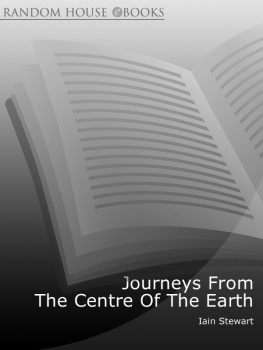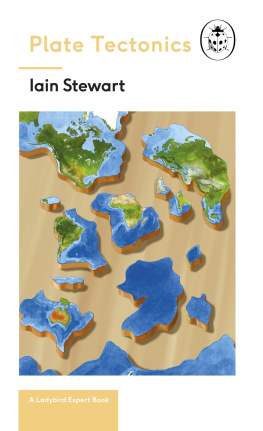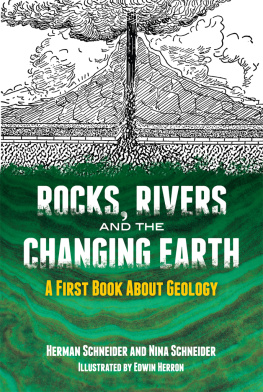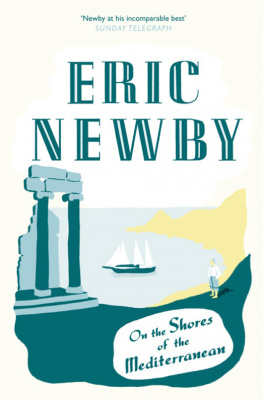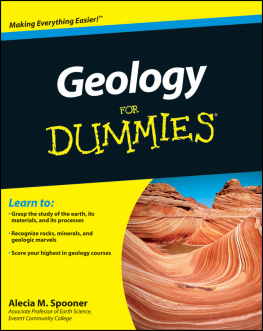CONTENTS
About the Book
Journeys From The Centre Of The Earth explores the cradle of western civilization the Mediterranean and discovers alongside its tranquil, sun-lapped shores, one of the most volatile places on an ever-changing earth.
The Mediterranean we know today has been forged in a violent crucible of clashing continents, rising mountains, restless seas and a turbulent climate. Millions of us are drawn to the Mediterranean every year and whether we go for the beautiful scenery and relaxing beaches or the culture, architecture or food, none of it would be there were it not for geology.
Geologist and television presenter, Dr Iain Stewart delves back over one hundred million years to uncover the hidden Mediterranean. Here we learn about the mysterious processes that have come to form the sand covered beaches we know today, how the geological lottery that formed the landscapes of Italy, Egypt and Greece is also responsible for the shapes of these regions greatest buildings, how mans struggle with water came to shape our history and why the Mediterranean could be one of the most dangerous spots on the planet.
Bringing a fresh and dramatic eye to the study of the history and composition of the earth, Stewarts journey explains just why it is that geology should be restored to its rightful place as the grandfather of sciences. From earthquakes and volcanoes to Italian art and Christian belief; travelling across Spain, Italy, Greece and Egypt, Stewart discovers how geology has shaped our lives and how we can expect it to affect us in years to come.
About the Author
Dr Iain Stewart is a senior lecturer in Geology at the University of Plymouths School of Earth, Ocean and Environmental Sciences. He is also a television presenter for the BBCs Science Department. He lives with his family in Plymouth.
To Paul Hancock, in whose footsteps Im still treading
ACKNOWLEDGEMENTS
This book emerges out of a long-standing interest in how geology has impacted on the lives of people, both today and in the past. That interest was especially fostered in my early academic years by two mentors, Paul Hancock and Claudio Vita-Finzi, both of whom pursued research that strode roughshod across traditional disciplinary boundaries. As is so often the case, my geological world expanded greatly through the supervision of research students like Victoria Buck and Thomas Dewez (who also provided the illustration of the Mediterranean tectonic setting) and through collaboration with Suzanne Leroy, out of which developed our UNESCO/International Geological Correlation Program research initiative on Environmental Catastrophes and Human History. Much of the wide-ranging preoccupations of these individuals are buried in its pages, as is the work of numerous colleagues and fellow researchers who are hammering away at that exciting but tricky frontier of modern earth science that brushes up against history, archaeology, and anthropology. A casualty of writing a geology book for those that dont think they are interested in geology has meant the expunction of references to specific scientists, articles and books that fed this work, but I trust that those that feature here recognise their input and appreciate the dilemma.
The book started life first as the BBC/Discovery television series Journeys From The Centre Of The Earth (or Hot Rocks for US viewers). For that series I am indebted to Belinda Cherrington, who as Series Producer made it her baby, before leaving to produce a real one of her own (hi Rebekka). I am equally indebted to Jeremy Phillips who took over the challenge of making a popular mainstream geology series and saw it to its completion, aided by the enthusiastic and critical guidance of Clare Patterson and John Lynch. As well as thanks to those at BBC Specialist Factual that got the project off the ground Cameron Bilbirnie, Michael Mosley, Steve Wilkinson and Matthew Barrett I am grateful to all that made the filming of it such a fun time: Paul Olding, Nigel Miller, Nikki Meluish, Billie Pink, Kat Blair, Cathyrn ONeill, George Hitchins, Nick Walker, Alan Parry, Jane Johnston, Patricia Fearnley, and especially my cameraman, Jeremy Humphries. Without their constant encouragement to persevere with the writing amidst our seemingly unremitting whistle-stop tour of Mediterranean airports and hotels this book would not have materialised. Neither would it have seen the light of day if it wasnt for the unflinching faith and support of my literary agent, Sheila Ableman, and the infectious enthusiasm of Christine King. At my publishers, Century, my idiosyncratic Scottish prose was gently whittled into shape by the editorial scalpel of Hannah Black and Im grateful also to the design skills of Dave Crook.
Together, the series and book have taken more than a year and half out of my normal academic life. In this regard I owe a great debt to the help, patience and encouragement of many former colleagues in the Department of Geography and Earth Sciences at Brunel University, and in the Centre for Geosciences at the University of Glasgow, as well as current colleagues at the Department of Geology at Plymouth University. I can now get back to the day job!
But of course the greatest debts lie closer to home, with the friends and family who shared the excitement of the series and book unfolding, with the kids Cara and Lauren who for six months lost a Dad and gained an irritable itinerant lodger, and Paola my wife who kept everything on track, as ever. This book was their sacrifice and my glory.
CHAPTER 1
MEDITERRANEAN WORLDS
IN JULY 1831, something was disturbing the Mediterranean Sea off the south coast of Sicily. The waters churned and boiled, spouting great bursts of steam and ash high into the air, followed by thunderous eruptions of fire and cinders. There was the stink of sulphur, and all around dead fish floated on the surface of the sea. Far below, subterranean volcanic eruptions were pushing up a speck of sea bed until it broke above the waves to become the Mediterraneans newest island, and a source of general astonishment.
It didnt take long for this tiny scrap of rock, less than two kilometres round and sixty-odd metres high, to cause an international political spat. The British saw its strategic value, close to major shipping lanes, and promptly planted a flag on it, naming it Grahams Island after Sir James Graham, then First Lord of the Admiralty. No sooner had the British departed than it was claimed by King Ferdinand II of the Two Sicilies (Italy was not yet united), and renamed after himself: Ferdinandea. The French and Spanish showed interest too, and the island became something of a tourist attraction. The diplomatic furore died only when everyone realised that, in the months they had been fighting over its sovereignty, it was sinking sheepishly back beneath the waves. By December it had disappeared from sight.
In recent years, Ferdinandea has been up to its old tricks. In 1987, the sub-sea volcanic mound had risen enough to be mistaken for a Libyan submarine by US aircraft, and unceremoniously depth-charged. By February 2000, fresh eruptions had brought the summit of the volcano to within eight metres of the sea surface, a threat to shipping. Fresh volcanic activity a year later led geologists to suggest that the next eruption would cause the island to re-emerge, opening again those old but unresolved diplomatic wounds. Meanwhile, the Italians have reportedly had a diver plant another flag on this subterranean territory, to remind rivals who owns it.
Next page
